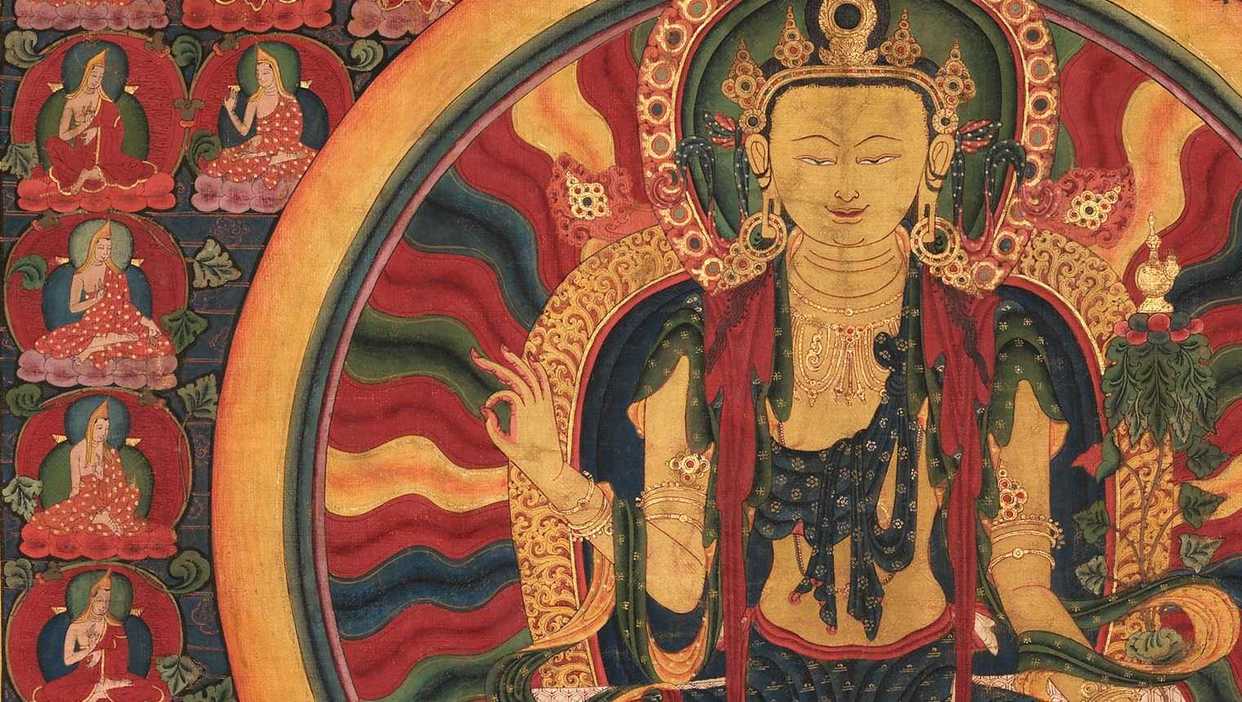The Role of Women in Himalayan Art

Although not often centered in gallery spaces, both secular and religious artists of the Himalayas have been creating beautiful and powerful images (himalyan art) of women for millennia. Recently, benefactors like Louise Gund and spaces like the Berkeley Art Museum and Pacific Film Archive have brought the focus back to female figures in this time-honored artistic tradition.
Buddhist Himalayan Art
Himalayan Buddhism focuses more on a mythological pantheon of protagonists and antagonists than the more zen-like Mahayan Buddhism. It’s art is known for being colorful, erotic and lively. There are myriad depictions of divine women. Female identity is often intertwined with the concepts of wisdom, beauty, compassion, fecundity and power. Here are some examples of female figures to look for:
Mahapajapati Gotami
Himalaya is home to Buddhist nuns known as bikshunis or bikkhunis, that are often painted or drawn in murals. They are followers of the first bikkhuni, Mahapajapati Gotami, Buddha’s maternal aunt and adoptive mother who was the first woman to both request and receive ordination from Gautama Buddha directly. She raised the Buddha after his birth mother, Maya, passed away. Maya and Mahapajapati were Koliyan princesses and sisters to Suppabuddha. The story of Mahapajapati and her 500 bikshuni companions was widely popular and existed in multiple versions over the centuries.
Tara
Tara is an important female figure in almost all branches of Buddhism- in Vajrayana Buddhism she is a female Buddha; in Mahayana Buddhism she is a boddhisattva; in Tibetan Buddhism she is specifically the boddhisattva of compassion and action. She is even known in Chinese and Japanese Buddhism. She is also called the mother of liberation and represents the virtue of success from work. In the artistic record, she can be seen as a statue, painting, mural or thangka. One of her most famous depictions is the Holy Spoken Green Tara in Nyanang Phelgyeling Monastary, Tibet.
Palden Lhamo
Palden Lhamo or Panden Lhamo is a goddess or Dharmapala in Tibetan Buddhism. Her name translates to “Glorious Goddess”. She is celebrated all over Tibet and Mongolia as a principle protector of the region, and is also claimed to be the tutelary deity of Tibet and its government. She is known to be a wrathful female protector, and the only female among the traditional ‘Eight Guardians of the Law’. She is depicted as being deep blue with red hair and three eyes, often crossing a sea of blood on a white mule. She is also often shown drinking blood from a human skull. It is told that she killed her own son, who was destined to bring an end to Buddhism, and used his skin as a saddle for her mule.
Male figures and gods such as the Buddha or Krishna may come immediately to mind when thinking about historical Buddhist art. This may be due to how this art has been presented in International spaces, because women were not originally meant to take a back seat in this artistic tradition. It’s wonderful that the archival and artistic communities are coming back to re-examine the role of women in Himalayan art and re-frame their interpretation.
